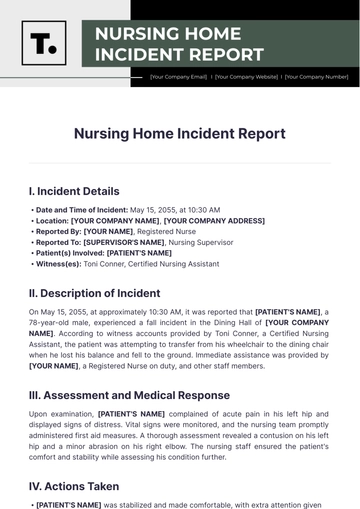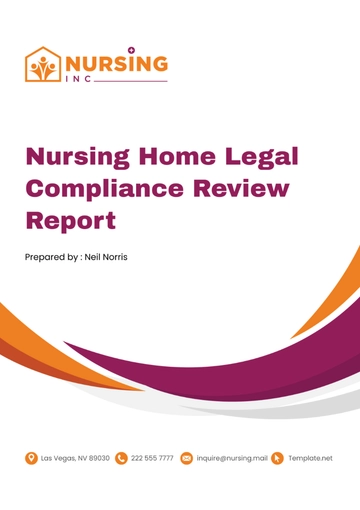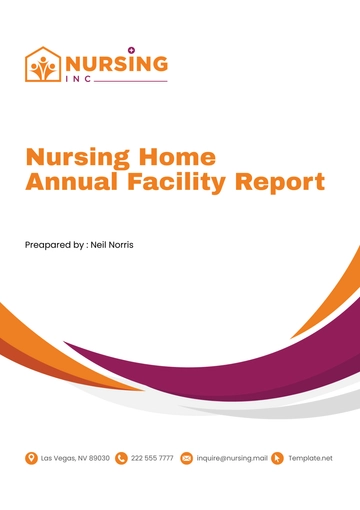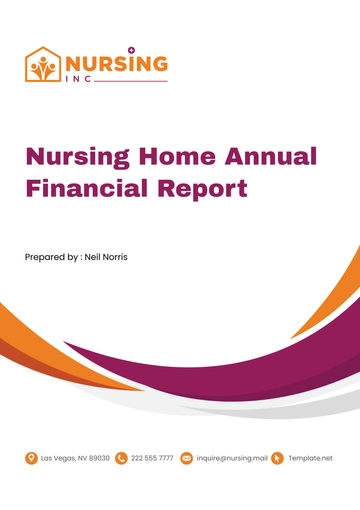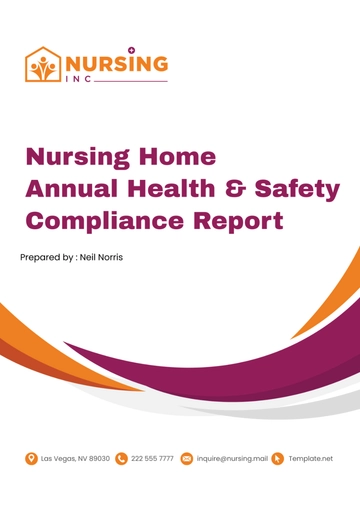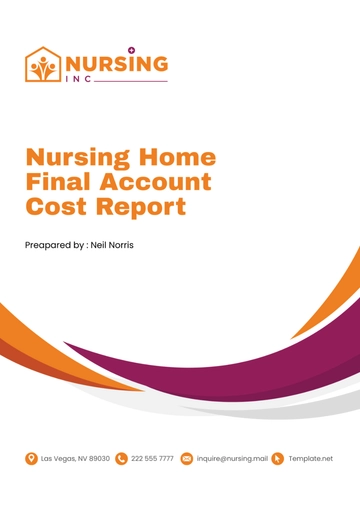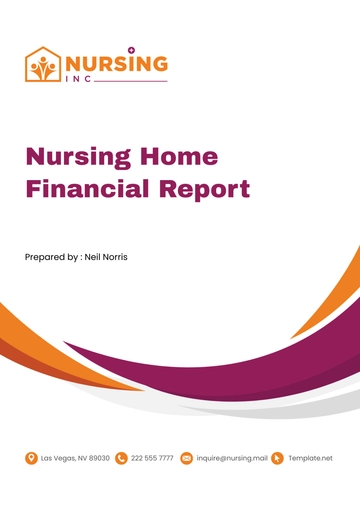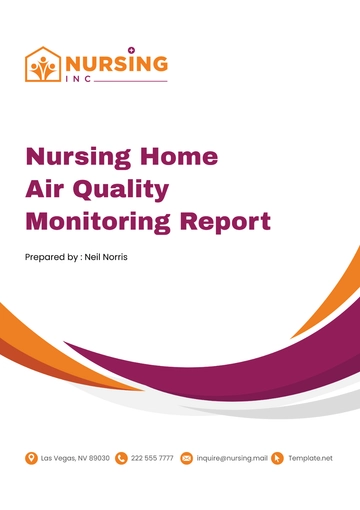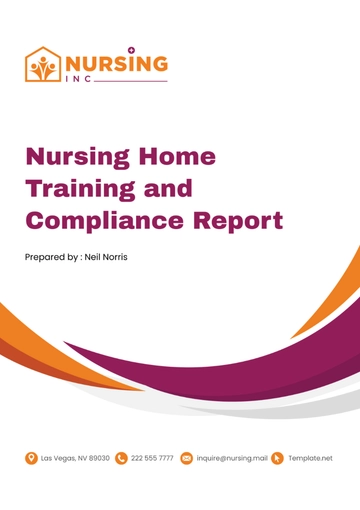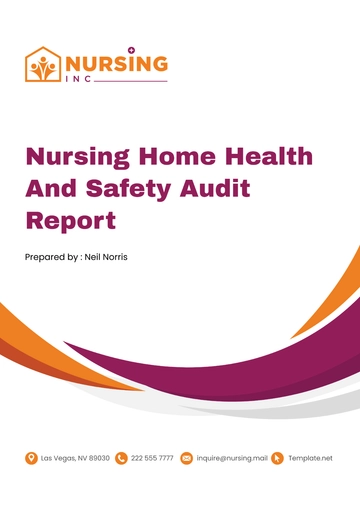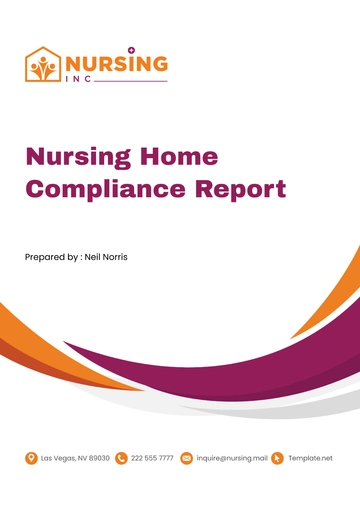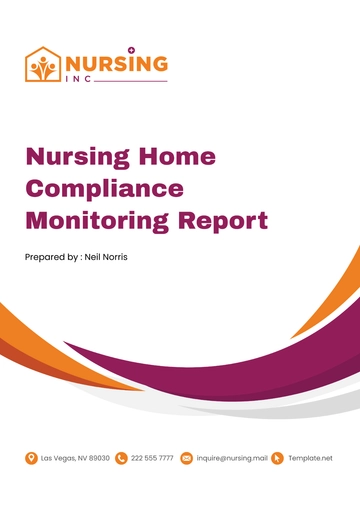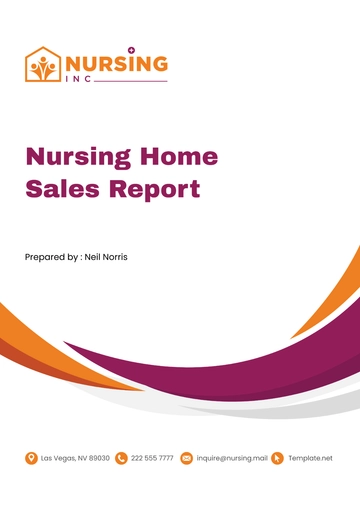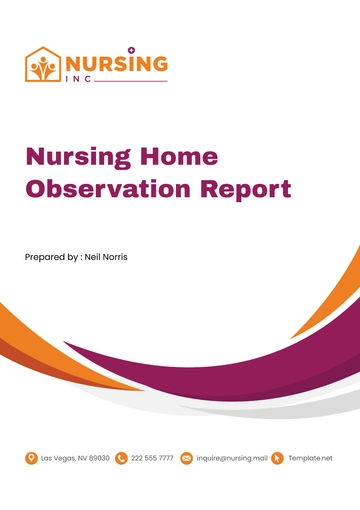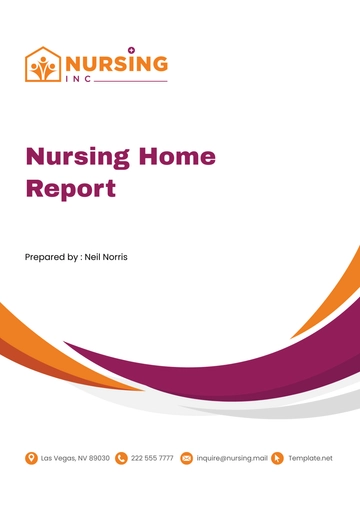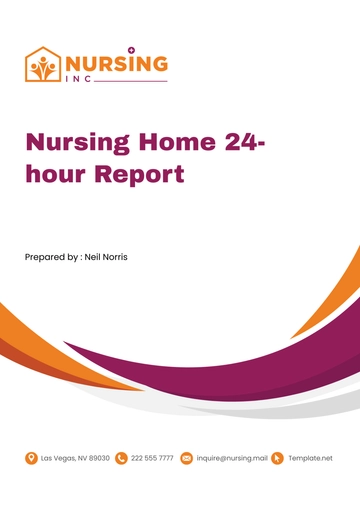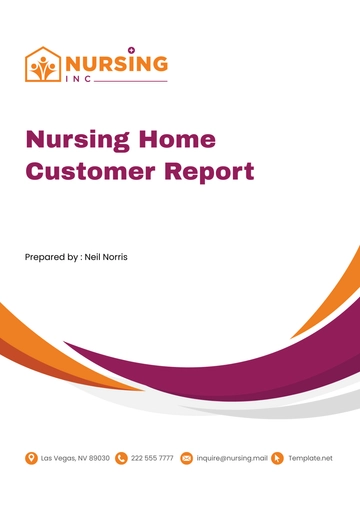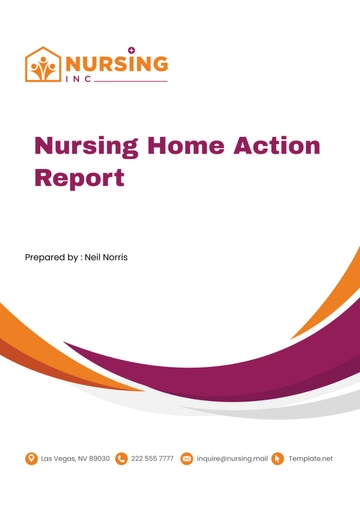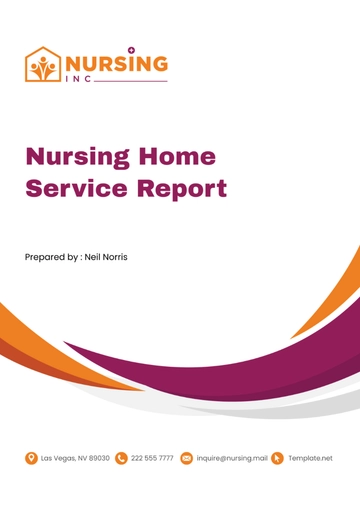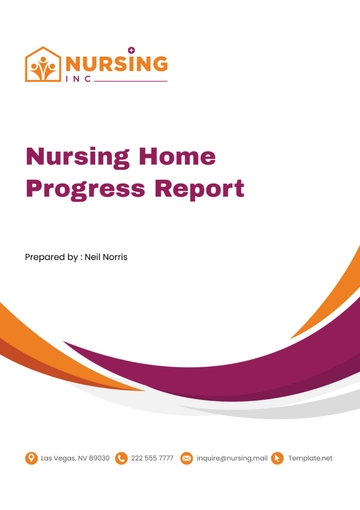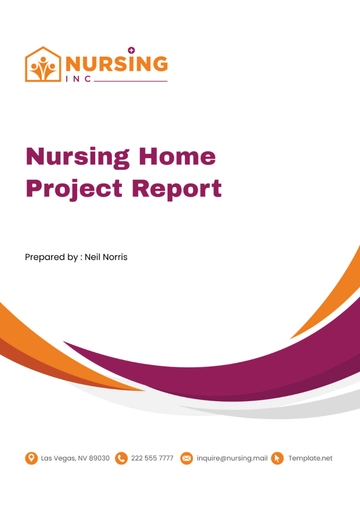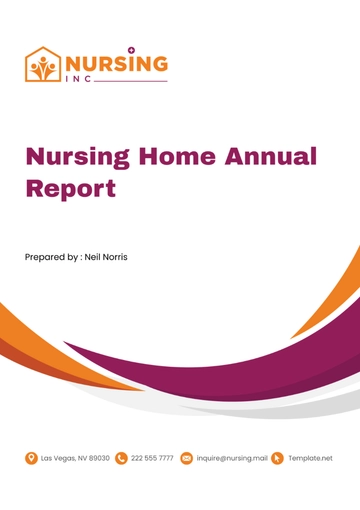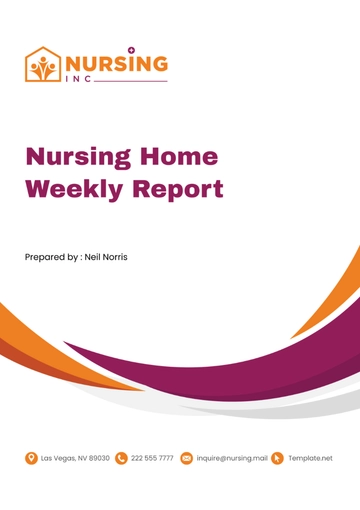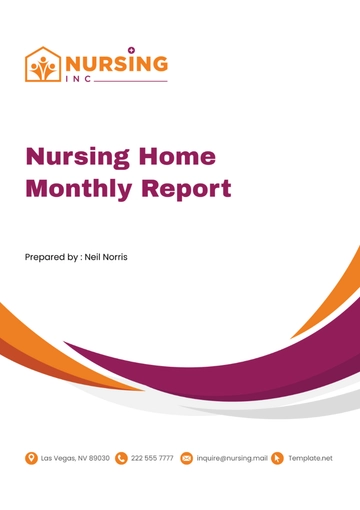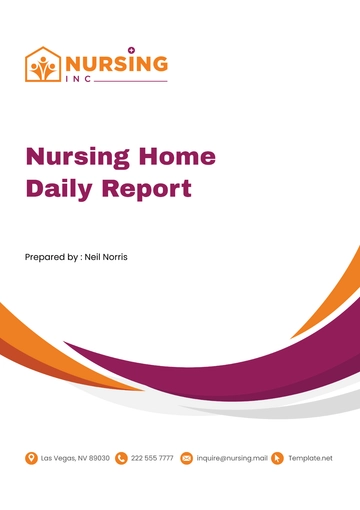Free Nursing Home Action Report
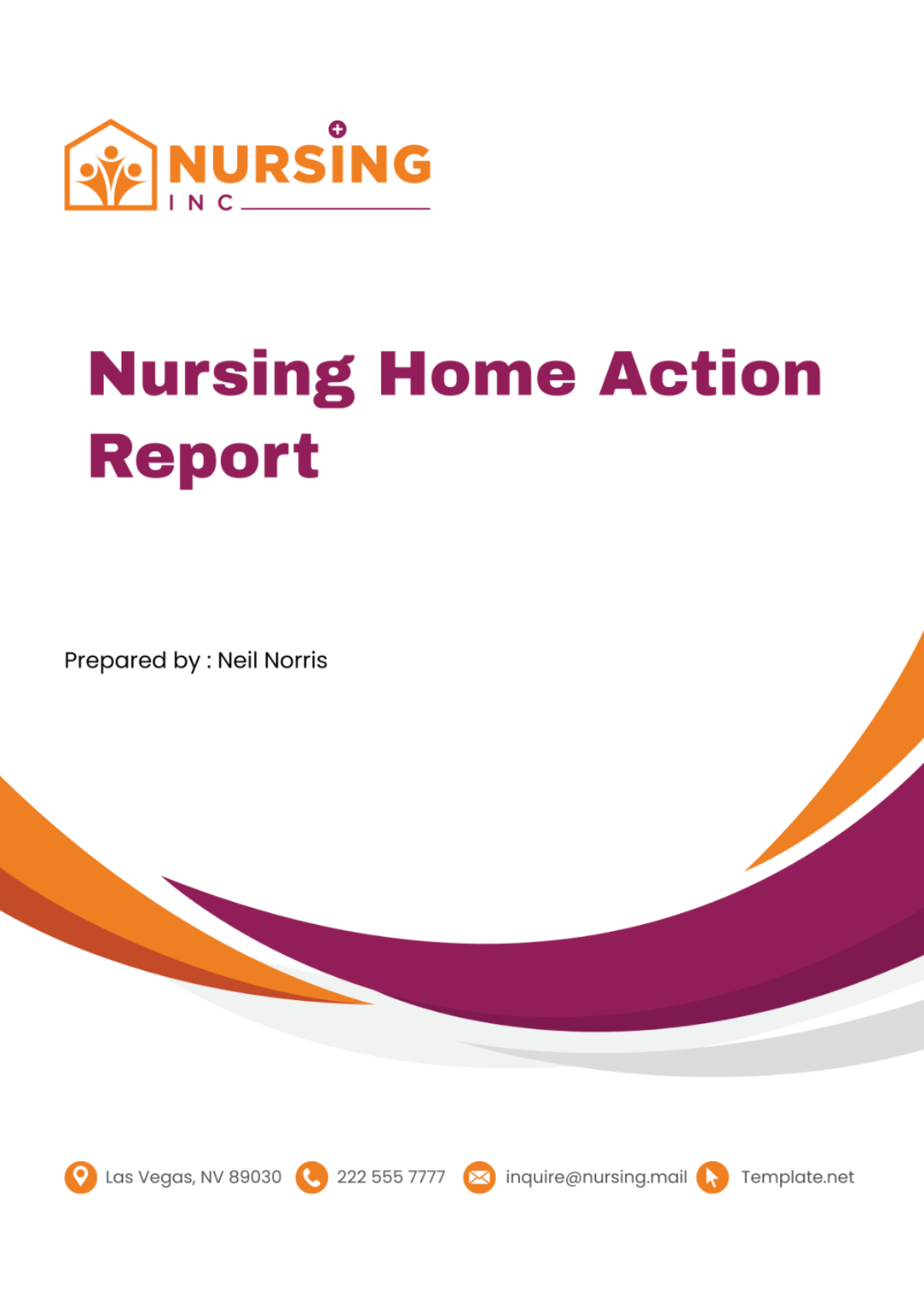
Purpose
This report has been meticulously compiled by [YOUR NAME] for [YOUR COMPANY NAME] with the fundamental goal of highlighting and pinpointing areas necessitating enhancement, alongside proposing a forward-thinking approach for the amelioration of nursing home facilities. The essence of this document lies in delivering a thorough exploration of findings and crafting an actionable strategy aimed at augmenting patient care, optimizing processes, and elevating the efficiency and effectiveness of nursing home management.
1. Executive Summary
In the landscape of healthcare, particularly within the realm of nursing home operations, the imperative for continual improvement remains paramount. This report encapsulates the performance evaluation of our nursing home during the most recent fiscal quarter, shedding light on pivotal challenges and sectors requiring substantial enhancement.
At the core of [YOUR COMPANY NAME]'s mission is the unyielding commitment to elevate operational efficiency across our nursing home facilities, all the while upholding and surpassing the pinnacle of care quality for our residents. Through a meticulous analysis and strategic oversight, this document seeks to not only diagnose but also remediate areas lagging in performance, ensuring a trajectory towards excellence and holistic well-being for both our residents and staff.
2. Performance Assessment
Performance Metrics
Metrics | Q1 Results | Q2 Results |
|---|---|---|
Patient Satisfaction | 70% | 75% |
Operational Efficiency | 60% | 65% |
Staff Productivity | 80% | 85% |
Cost Efficiency | 55% | 60% |
The data presented above serves as a testament to the slight yet consistent progress observed across all principal performance metrics during Q2. This uptrend is indicative of the fruitful outcomes stemming from the strategic initiatives deployed at the culmination of Q1. Let's delve deeper into each of these metrics and outline the supplementary actions contributing to these improvements:
Patient Satisfaction (70% to 75%): Enhanced patient satisfaction is attributed to the implementation of personalized care plans, augmented communication protocols between caregivers and residents, and the introduction of diverse recreational and therapeutic activities tailored to patient interests and needs. Moving forward, the integration of a patient-centric feedback system is projected to further elevate satisfaction levels, fostering an environment where patient voices directly inform service improvements.
Operational Efficiency (60% to 65%): The improvement in operational efficiency is largely due to the adoption of technology solutions that streamline administrative tasks and patient care processes. Implementing electronic health records (EHR) and leveraging data analytics for operational planning have reduced redundancy and optimized resource allocation. Continuing on this path, exploring advanced technologies such as AI for predictive analytics in patient care and operational management will be pivotal.
Staff Productivity (80% to 85%): An increase in staff productivity has been achieved through targeted training programs aimed at enhancing both the hard and soft skills of the staff. Additionally, the introduction of flexible scheduling and the recognition of staff achievements have bolstered morale and engagement. Investing in continuous professional development and creating a culture of appreciation and inclusivity will remain critical in sustaining high productivity levels.
Cost Efficiency (55% to 60%): Improvements in cost efficiency have been realized by optimizing supply chain management and renegotiating vendor contracts. Furthermore, the implementation of energy-saving initiatives and waste reduction programs have contributed to lower operational costs. Future strategies will focus on comprehensive resource management and leveraging economies of scale for procurement to further enhance cost efficiency.
3. Challenges and Areas for Improvement
Despite the strides made in enhancing our nursing home's operational framework, there remain critical challenges that demand our immediate attention and concerted effort for improvement. These challenges not only underscore the complexity of healthcare management but also highlight the nuanced areas vital for elevating the quality of life for our residents and the work environment for our staff.
Challenges:
Ensuring Continuity of Care: A paramount challenge lies in maintaining seamless care for our residents across all shifts and services. This continuity is crucial for both the physical well-being and emotional security of our residents, requiring meticulous coordination and communication among caregivers.
Increasing Staff Morale and Productivity: Staff morale and productivity are directly linked to the quality of patient care. Challenges such as burnout, insufficient recognition, and inadequate professional growth opportunities can significantly dampen staff morale, thereby affecting their productivity and, ultimately, patient outcomes.
Maintaining Adequate Staffing: The healthcare sector, particularly nursing homes, faces a persistent challenge in recruiting and retaining skilled staff. This issue is compounded by a growing demand for healthcare services, making it imperative to address staffing adequacy to ensure high-quality care delivery.
Implementing Technology Solutions: While technology holds the promise of revolutionizing care delivery, the challenge lies in selecting, implementing, and effectively integrating the right technological solutions into our existing processes without disrupting care or burdening staff with steep learning curves.
Increasing Patient Satisfaction: Patient satisfaction is a multifaceted challenge that encompasses every aspect of a resident's experience within our facility. From the quality of care to the living environment, numerous factors contribute to their overall satisfaction and well-being.
Areas for Improvement:
Training and Skill Development: Continuous professional development is essential for keeping our staff at the forefront of best practices in patient care and operational efficiency. A well-designed training program is crucial for enhancing their skills and knowledge base.
Patient Feedback and Grievance Redressal Mechanism: An effective feedback system is integral to understanding and addressing our residents' concerns and grievances. Such a mechanism not only aids in improving service quality but also in elevating patient satisfaction levels.
Implementation of Modern Healthcare Technology: Embracing modern technology solutions can significantly streamline our operations, improve care delivery, and reduce administrative burdens. The key lies in integrating technology that complements our care models and operational workflows.
Process Streamlining and Standardization: Standardizing processes across our facilities can help reduce variability in care delivery, ensuring every resident receives the same high quality of care and services.
Cost and Resource Optimization: Efficient use of resources and cost management are fundamental to sustaining our operations while delivering high-quality care. Identifying areas for optimization can lead to more effective resource allocation and reduced operational costs.
4. Action Plan
In response to these challenges and areas for improvement, [YOUR COMPANY NAME] proposes a comprehensive and multi-faceted action plan. This plan is designed not just to address the immediate areas of concern but to lay a foundation for sustained improvement and excellence in care delivery.
Implementation Strategies:
Develop an In-depth Training Program for Staff: We will design and implement a holistic training program focusing on both the technical and soft skills necessary for high-quality care delivery. This program will include ongoing education on the latest healthcare practices, resilience training, and leadership development to empower our staff at all levels.
Establish a Robust Patient Feedback and Grievance Redressal Mechanism: A structured system will be put in place to collect, analyze, and act on patient feedback. This mechanism will ensure transparency, responsiveness, and a patient-centered approach to service improvement.
Invest in Modern Healthcare Technology: Strategic investments will be made in technology solutions that align with our care delivery models and operational needs. This includes electronic health records (EHRs), telemedicine platforms, and automation tools to enhance efficiency and patient engagement.
Create a Process Standardization Framework: A comprehensive framework for process standardization will be developed to ensure consistency in care and service delivery. This will involve mapping existing processes, identifying best practices, and implementing standard operating procedures across the board.
Focus on Cost and Resource Optimization: Through meticulous review and analysis, we will identify opportunities for cost savings and better resource utilization. Initiatives may include energy-saving measures, sustainable practices, and optimization of supply chain management.
Conclusion
As [YOUR COMPANY NAME] continues to navigate the complexities of healthcare management and service delivery, this report and the proposed action plan underscore our unwavering commitment to excellence. By addressing the identified challenges and implementing strategic improvements, we are poised not only to enhance the quality of life for our residents but also to create a nurturing and productive environment for our staff. This journey towards improvement is continuous, and with the dedication of our team and the strategic application of resources, we are confident in our ability to achieve and sustain the highest standards of care and operational efficiency.
For further inquiries or detailed discussion regarding this report, please do not hesitate to contact:
[YOUR NAME]
[Your Position]
[YOUR COMPANY NAME]
[Your Company Email]
[Your Company Address]
[Your Company Number]
[Your Company Website]
[Your Company Social Media]
[YOUR COMPANY NAME] is committed to continuous improvement and excellence in our nursing home facilities. We welcome your feedback and look forward to engaging with you to enhance the quality of care and services we provide.
- 100% Customizable, free editor
- Access 1 Million+ Templates, photo’s & graphics
- Download or share as a template
- Click and replace photos, graphics, text, backgrounds
- Resize, crop, AI write & more
- Access advanced editor
Efficiently document and analyze operational activities with our Nursing Home Action Report Template, accessible on Template.net! Utilize our customizable solution to create comprehensive action reports tailored to your facility's needs. With our intuitive AI editor tool, streamline data entry and analysis processes effortlessly. Enhance decision-making and accountability within your organization. Start optimizing your operational performance today!
You may also like
- Sales Report
- Daily Report
- Project Report
- Business Report
- Weekly Report
- Incident Report
- Annual Report
- Report Layout
- Report Design
- Progress Report
- Marketing Report
- Company Report
- Monthly Report
- Audit Report
- Status Report
- School Report
- Reports Hr
- Management Report
- Project Status Report
- Handover Report
- Health And Safety Report
- Restaurant Report
- Construction Report
- Research Report
- Evaluation Report
- Investigation Report
- Employee Report
- Advertising Report
- Weekly Status Report
- Project Management Report
- Finance Report
- Service Report
- Technical Report
- Meeting Report
- Quarterly Report
- Inspection Report
- Medical Report
- Test Report
- Summary Report
- Inventory Report
- Valuation Report
- Operations Report
- Payroll Report
- Training Report
- Job Report
- Case Report
- Performance Report
- Board Report
- Internal Audit Report
- Student Report
- Monthly Management Report
- Small Business Report
- Accident Report
- Call Center Report
- Activity Report
- IT and Software Report
- Internship Report
- Visit Report
- Product Report
- Book Report
- Property Report
- Recruitment Report
- University Report
- Event Report
- SEO Report
- Conference Report
- Narrative Report
- Nursing Home Report
- Preschool Report
- Call Report
- Customer Report
- Employee Incident Report
- Accomplishment Report
- Social Media Report
- Work From Home Report
- Security Report
- Damage Report
- Quality Report
- Internal Report
- Nurse Report
- Real Estate Report
- Hotel Report
- Equipment Report
- Credit Report
- Field Report
- Non Profit Report
- Maintenance Report
- News Report
- Survey Report
- Executive Report
- Law Firm Report
- Advertising Agency Report
- Interior Design Report
- Travel Agency Report
- Stock Report
- Salon Report
- Bug Report
- Workplace Report
- Action Report
- Investor Report
- Cleaning Services Report
- Consulting Report
- Freelancer Report
- Site Visit Report
- Trip Report
- Classroom Observation Report
- Vehicle Report
- Final Report
- Software Report
